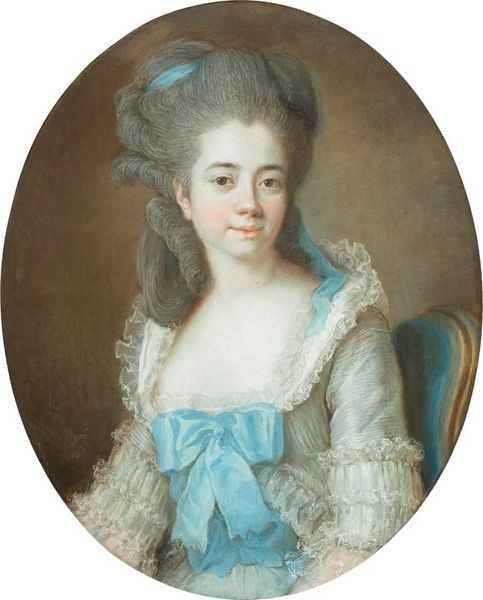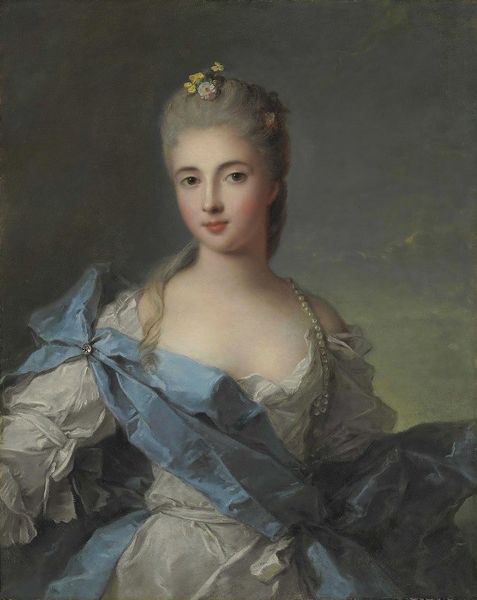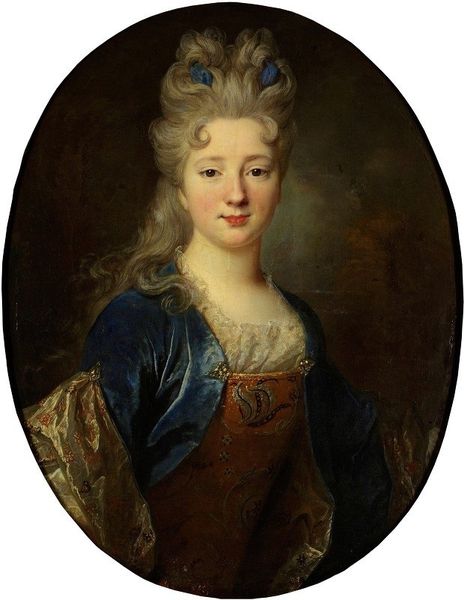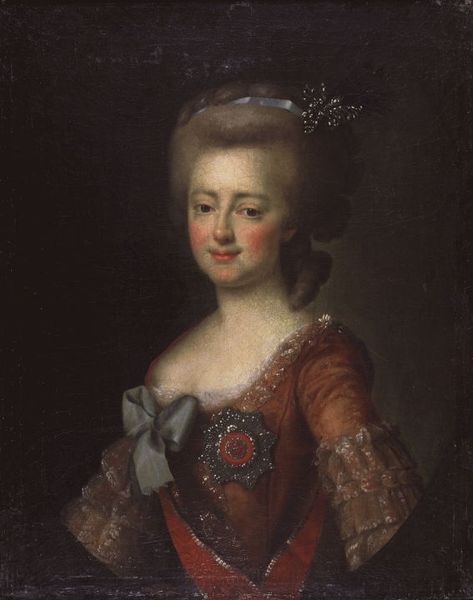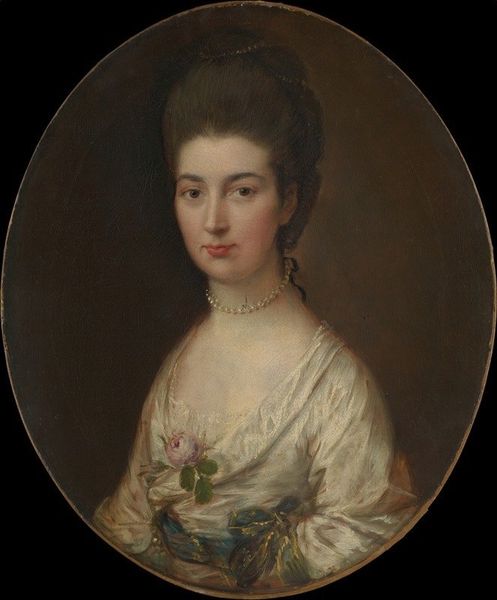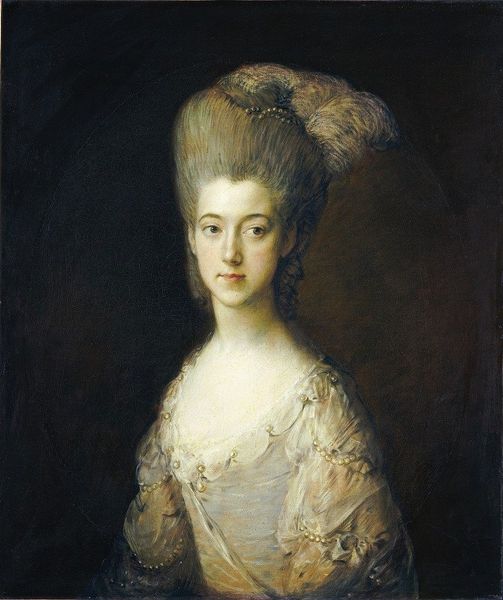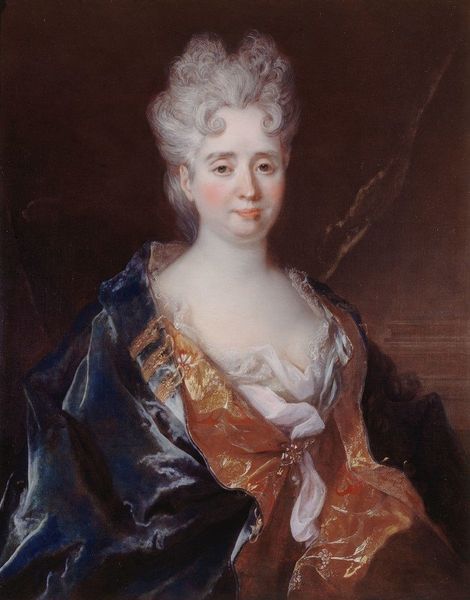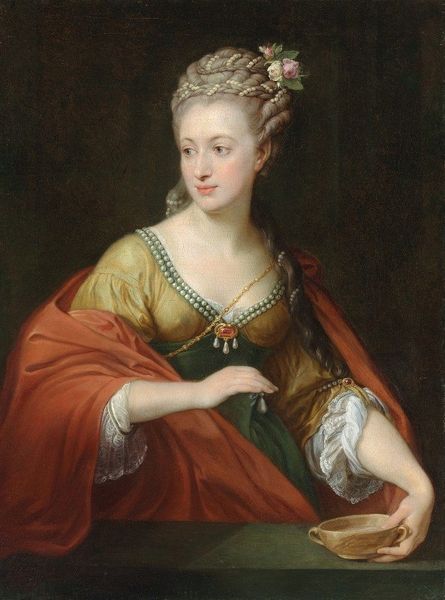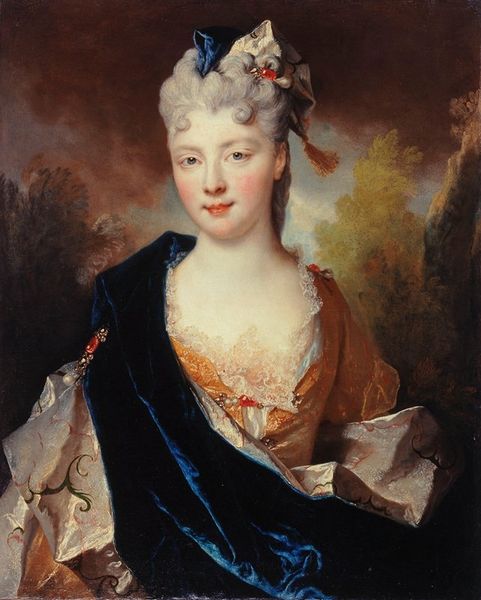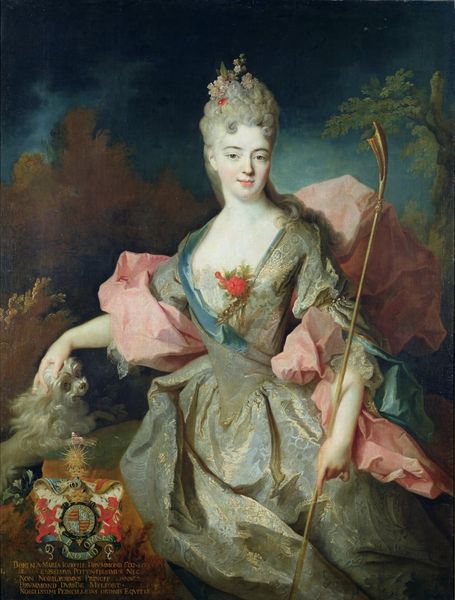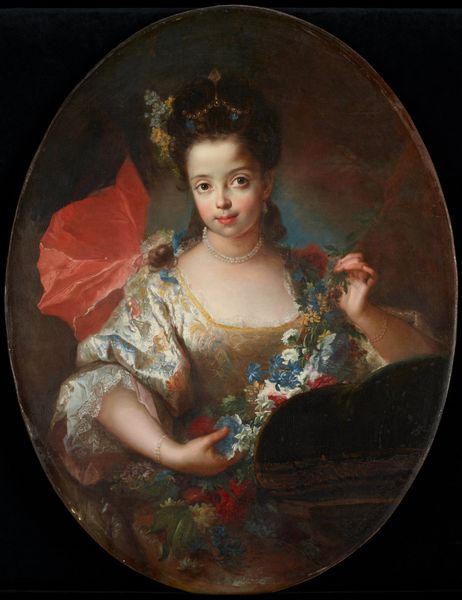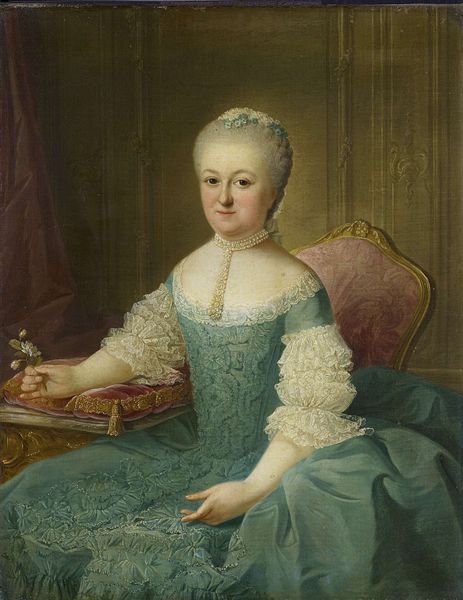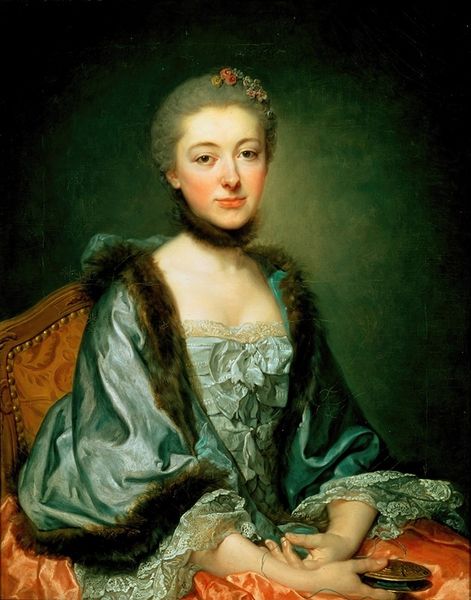
painting
#
portrait
#
figurative
#
baroque
#
painting
#
portrait drawing
#
history-painting
#
academic-art
Copyright: Public Domain: Artvee
Curator: Standing before us is Jean-François de Troy's "Portrait of Princess Luisa Maria Theresa Stuart," painted around 1700. An intriguing specimen from the Baroque era. Editor: She appears lost in a world of gentle innocence, with that delicate flower acting as her confidante, perhaps even a symbol of ephemeral beauty. The subdued colours almost whisper. Curator: De Troy, a master of the French court, frequently received commissions for portraits, and notably history paintings as well. His access reveals a patronage system crucial to artistic production. Consider, for instance, the materials involved, sourced and prepared by numerous hands to achieve this luxurious effect. Editor: I see it as a young soul frozen in time, captured on canvas right before the great changes and heartbreaks of growing up will be revealed. The blue dress itself becomes like armour or a costume she puts on for this very portrait. The very deliberate composition. Curator: Precisely. Her clothing signifies the trappings and performance that constitute courtly life. We could consider how labour and manufacturing contributed to the material expression of power. What meanings were embedded within it during its initial creation and reception? Editor: It is strange to consider this young girl, the princess. I wonder if this painted likeness was also some type of cruel object for a business arrangement like an object for commerce; a bargaining chip to be presented and discussed. I mean I want to pull this canvas to my heart to keep her innocence and freedom safe. Curator: That is quite astute; it gives rise to questions on gender and labour in these arrangements. As for your emotional response to it, that too would have been crafted by specific painters who worked on portraits meant to flatter certain families, for diplomatic reasons. What labour conditions might they have encountered in workshops. Editor: Considering the process and materials is really vital; it has enabled me to grasp the complexity and significance behind court life. This makes the young princess painted even more haunting and important than when I began thinking about her. Curator: Indeed. Analyzing historical materiality can significantly reframe our perception and bring us a greater understanding and more well rounded viewpoint.
Comments
No comments
Be the first to comment and join the conversation on the ultimate creative platform.
